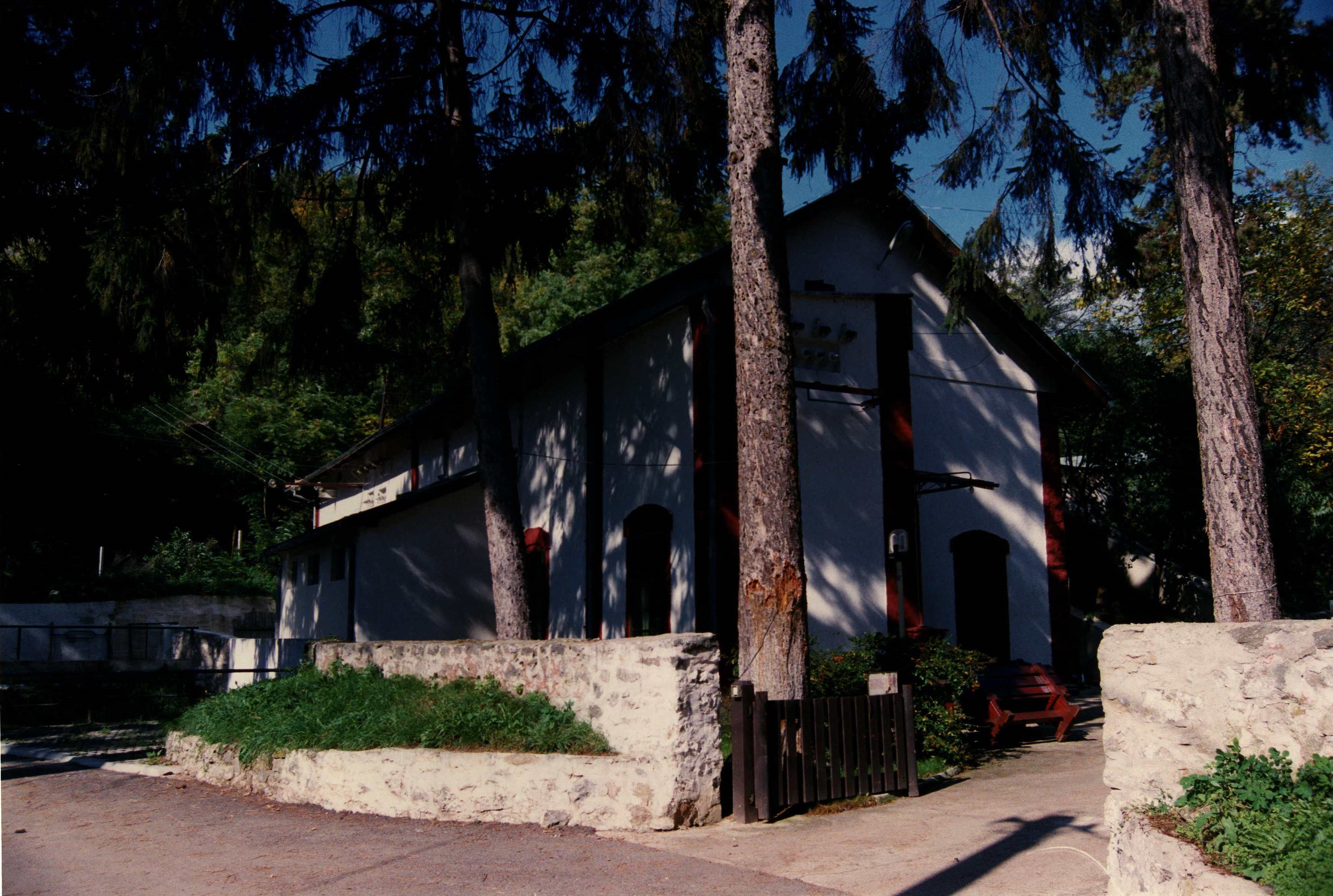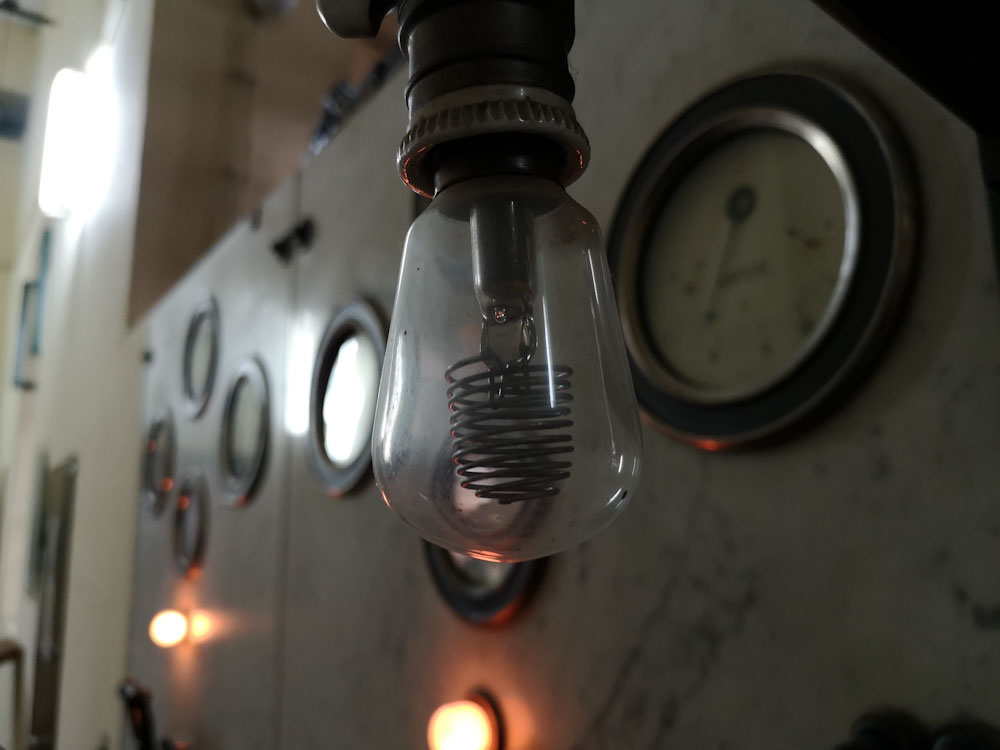
Professor Đorđe Stanojević suggested this location in Gamzigrad at the public gathering in Zaječar.

After three-years of legal battle, Toma Milošević receives the permit to build the first hydropower plant in Zaječar.

On November 1st 1909 the hydropower plant in Gamzigrad officially begun to work and first light bulbs lit Zaječar market.

In order to provide electricity for their mills at Veliki Izvor, Vražogrnac and Lubnica, Milošević family also built the transmission lines to those villages, bringing electricity to the people's homes in rural areas as well.

The sudden death of Toma Milošević in 1919 marked the beginning of the end of a very successful family business who controlled hydropower plants, mills, Sunflower Oil Factory, many kafanas and shops.

Zaječar Municipality and its mayor, Milan Miljković, begins to build its own electric power plant, strongly opposed by Milošević family.

The Municipality begun producing its own electricity on September 11, 1925 and until the lawsuit with Milošević family ended in 1930, Zaječar had two parallel and competing low voltage electric networks in town. This is probably a unique case in the history of electrification in Serbia, whit one side of Zaječar streets powered by the “Uroš Milošević & Sons” electricity, and the other by the municipal one.

In 1930 the Municipality had managed to push out the Milošević family from town electric supply, and they were forced to focus on supplying industry instead.

After World War II the plant became a part of the state company “Electrotimok” and has remained until today.
The idea for a hydropower plant at Gamzigrad was born in 1902 after the location was suggested by the professor Đorđe Stanojević (born in Negotin, a famous scientist who introduced the electricity and small hydropower plants in Serbia). After his presentation on the importance of electric energy for city lighting and industry at a meeting, Zaječar Electric Society was founded. It was led by Toma Milošević, a famous industrialist, and Jeremija Savić, the mayor at the time; nevertheless, the Society lasted briefly due to an argument between the founders. Milošević and Savić started a three-year litigation regarding the concession to use Timok water to produce electricity. At the end the concession was given to Milošević’s family company “Uroš Milošević & sons” after the Law Regarding the Concession for a Sunflower Oil Factory was passed. They got the concession in 1906 and it was limited to 10 years.

Toma Milošević (1862-1919) was the oldest son of Uroš Milošević (1935-1910), a well-known salesman from Vražogrnac. Toma graduated veterinary medicine in Switzerland and was a county veterinary until 1895 when he took over the family business after his father fell ill. He was one of the prominent members of the Radical Party in Zaječar and a parliament representative. He was a wealthy man, but also well-educated and knowledgeable of European modernization, its cultures and languages, hence he invested not only his capital but also personal energy and reputation into the electrification of Zaječar and the surrounding villages. The first power plant in Serbia was built in Belgrade in 1893 and Zaječar joined just a few towns – Valjevo, Užice, Leskovac and Niš – in getting electricity at the beginning of the 20th century, prior to many cities in Europe.
Milošević family decided to build two hydropower plants: at Gamzigrad Spa, upstream of Zaječar, and at their mill “Kostolac”, 3 km downstream of Zaječar. At the same time, they built a Sunflower Oil Factory which brought them electricity concession at the first place. Budapest-based company Ganz & Co. was responsible for all design of buildings and equipment and the works begun on March 1st 1908. The power plants were finished completely on November 1st, 1909 when they officially started to produce electricity.


The hydropower plant at Gamzigrad was built in the area called Beljigovo, where Black Timok river has a big fall, and it is located 10,5 km from Zaječar. A new water channel had to be built as well as a tunnel, and Timok river got a new stone dam. Ganz’s design also included a plant building (276 m2) and a house for the main engineer (69 m2) which are still in use. The plant used Francis’ water turbine with a horizontal axle and 300 turns per minute. The functioning of the turbine was regulated manually by Fink’s scoops, which influenced the stability of the electric power network and the intensity of lighting. High-voltage electricity was transmitted by cables to Zaječar where 7 transformers were installed to turn it into low-voltage. Between this power plant and the one at “Kostolac” mill, Milošević family has built a 15 km transmission line made of wooden lampposts and copper wire.

Zaječar Municipality signed a ten-year contract with Milošević company on March 3rd 1909 to replace the existing petroleum lighting in town with electricity and install 190 lightbulbs and 5 street lamps. The company was also obliged to install the public lighting for free and in November 1909 the first light bulbs brought light to Zaječar market. In order to provide electricity for the work of their mills at Veliki Izvor, Vražogrnac and Lubnica, Milošević family also built the transmission lines to those villages, bringing electricity to people's homes in rural areas as well.

The people of Zaječar had shown a great interest into electricity from early days, and the company published “The Manual for Electricity Use from the Uroš Milošević & sons Facilities” with fixed priorities and a pricelist. The first ones to have electricity were the owners of various shops in main streets, as well as the wealthy citizens. They were able to use electricity in the evening, while during daytime it was used to power the Sunflower Oil Factory and the mills of Milošević family.

Milošević family stopped the collaboration with the Ganz & Co. soon after the power plant was finished, and instead hired the Viennese Siemens Shuckert Company with whom it also collaborated after World War I. Just before the war, they started to collaborate with J. M. Voith St. Pölten N.Ö (also from Vienna) who designed the second turbine which was installed after the war. During World War I the power plant worked with interruptions and it was slightly damaged. The other power plant of “Kostolac” mill was destroyed during the war and was never rebuilt.
The sudden death of Toma Milošević in 1919 marked the beginning of the end of a very successful family business who controlled hydropower plants, mills, Sunflower Oil Factory, many kafanas and shops. His oldest son, Grgur, took over the business, nevertheless he died soon afterwards. Toma’s brothers, Mika and Stevan, fought for power and this had a negative effect on family business.

At the same time, Zaječar Municipality with the mayor Milan Miljković, had built the municipal electric power plant in 1922. Milošević family strongly opposed this and begun litigation which lasted 8 years. The Municipality begun producing its own electricity on September 11, 1925 and until the lawsuit ended in 1930, Zaječar had two parallel and competing low voltage electric networks in town. Namely, this fact is probably a unique case in the history of electrification in Serbia, when one side of Zaječar streets was powered by the “Uroš Milošević & Sons” electricity, and the other side of the streets by the municipal one. One half of citizens was subscribed to the municipal electricity, while the other half used Milošević’s network who also offered free connections. The Municipality had 801 subscribers in 1927.

In February 1929 the Ministry of Trade and Industry sent a committee to inspect the power plant at Gamzigrad, and they discovered certain irregularities. Milošević family refused to fix the problems, hence at the end of 1929 they were temporarily shut down. They tried to solve their financial difficulties by turning their company into joint-stock company “Electric and Mill Company Uroš Milošević & Sons JSC”, but the problems only became bigger.

The hydropower plant continued to work, nevertheless the number of subscribers was falling each year. Due to the changing water levels of Timok they had to install a diesel engine by Grazer-Vagon-Maschinenfabrik from Graz, Austria. In 1930 the Municipality had managed to push out the Milošević family from town electric supply, and they were forced to focus on supplying industry instead (numerous mills, mines, Factory of Wooden Heals and Shoe Molds, Roof Tiles Factory, train stations, etc.).

The Gamzigrad Hydropower Plant worked during World War II with certain interruptions, and after the war it became a part of the state company “Electrotimok”. The diesel turbine was dismantled in 1951, while the water ones built in 1921 and 1924 are still in operation today. Thanks to the energy and devotion of the people working at the plant, it still produces approximately 1.200.000 kWh of electricity per year.
Sources:
S. Petrović: Hidrocentrala Gamzigrad, unpublished manuscript from May 1993 (from the archive of Nikola Dišković)
Suzana Antić, Jelica Ilić, Nina Pogarčić: Zaječar čudesna priča – Iz života u Zaječaru 1466-2006. godine. Narodni muzej, Zaječar, 2013.





